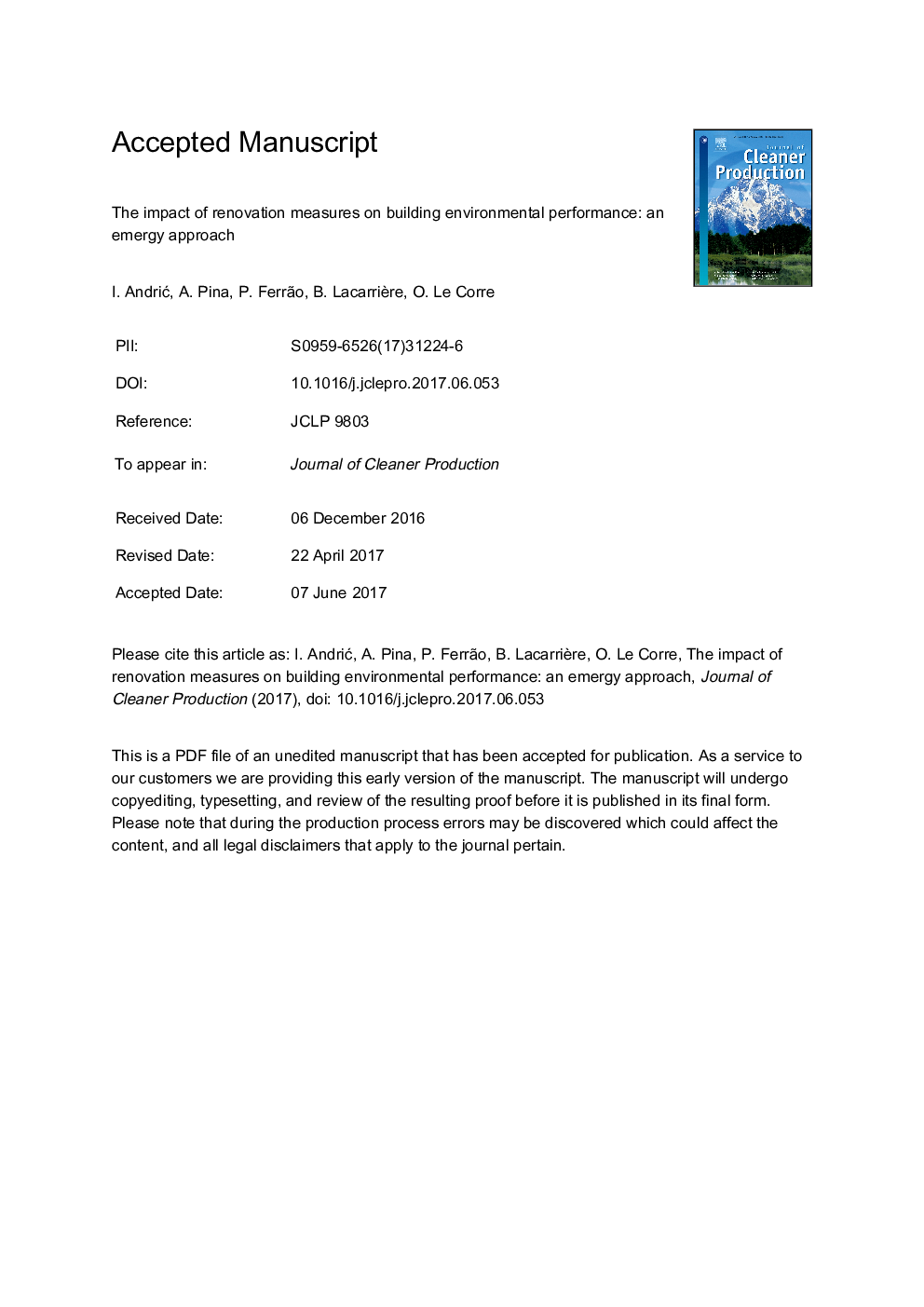| Article ID | Journal | Published Year | Pages | File Type |
|---|---|---|---|---|
| 5479389 | Journal of Cleaner Production | 2017 | 50 Pages |
Abstract
The overall results showed that 68% of the emergy flow is caused during the building operation phase, 24% during the construction phase and only 8% during the end-of-life phase. All renovation measures proved to be beneficial from the environmental point of view, and the use of additional materials and resources to conduct renovation measures considered did not have a negative impact on the building overall environmental performance. The effect of conducting renovation measures after the first decade of building lifetime improved the overall building environmental performance by almost 50% when compared to the same renovation measures conducted in the last decade of the lifetime (for all measures considered). Finally, based on the emergy indices analysis, it can be concluded that the application of building renovation measures improves the overall building environmental performance, enables higher efficiency in indigenous resource use, and lowers the pressure on a local ecosystem.
Related Topics
Physical Sciences and Engineering
Energy
Renewable Energy, Sustainability and the Environment
Authors
Ivan AndriÄ, André Pina, Paulo Ferrão, Bruno Lacarrière, Olivier Le Corre,
